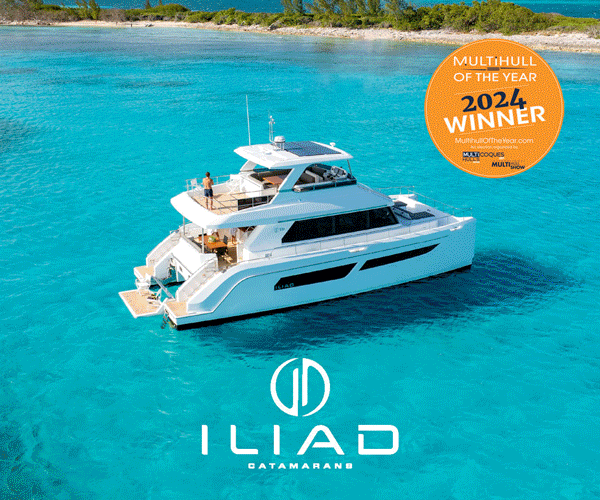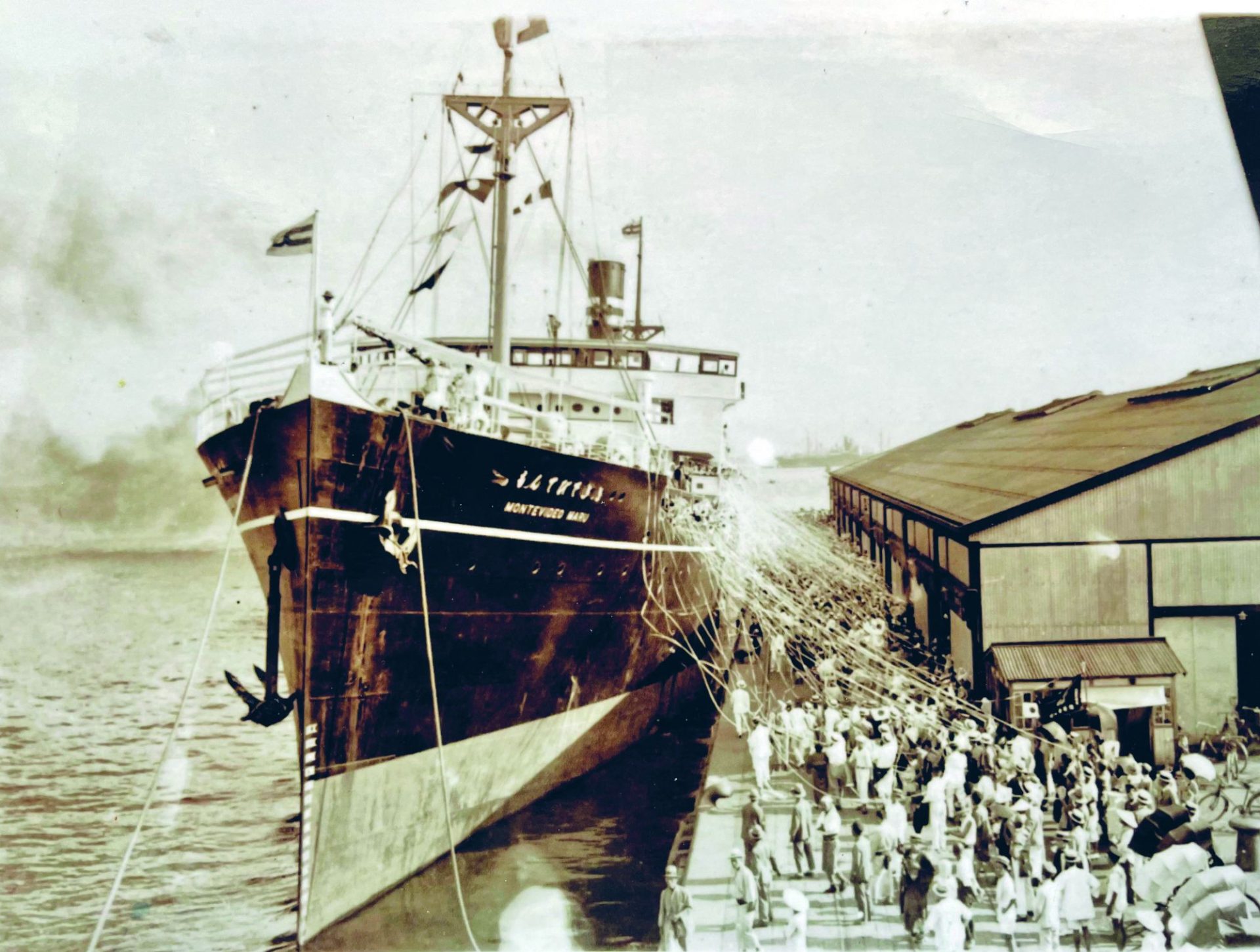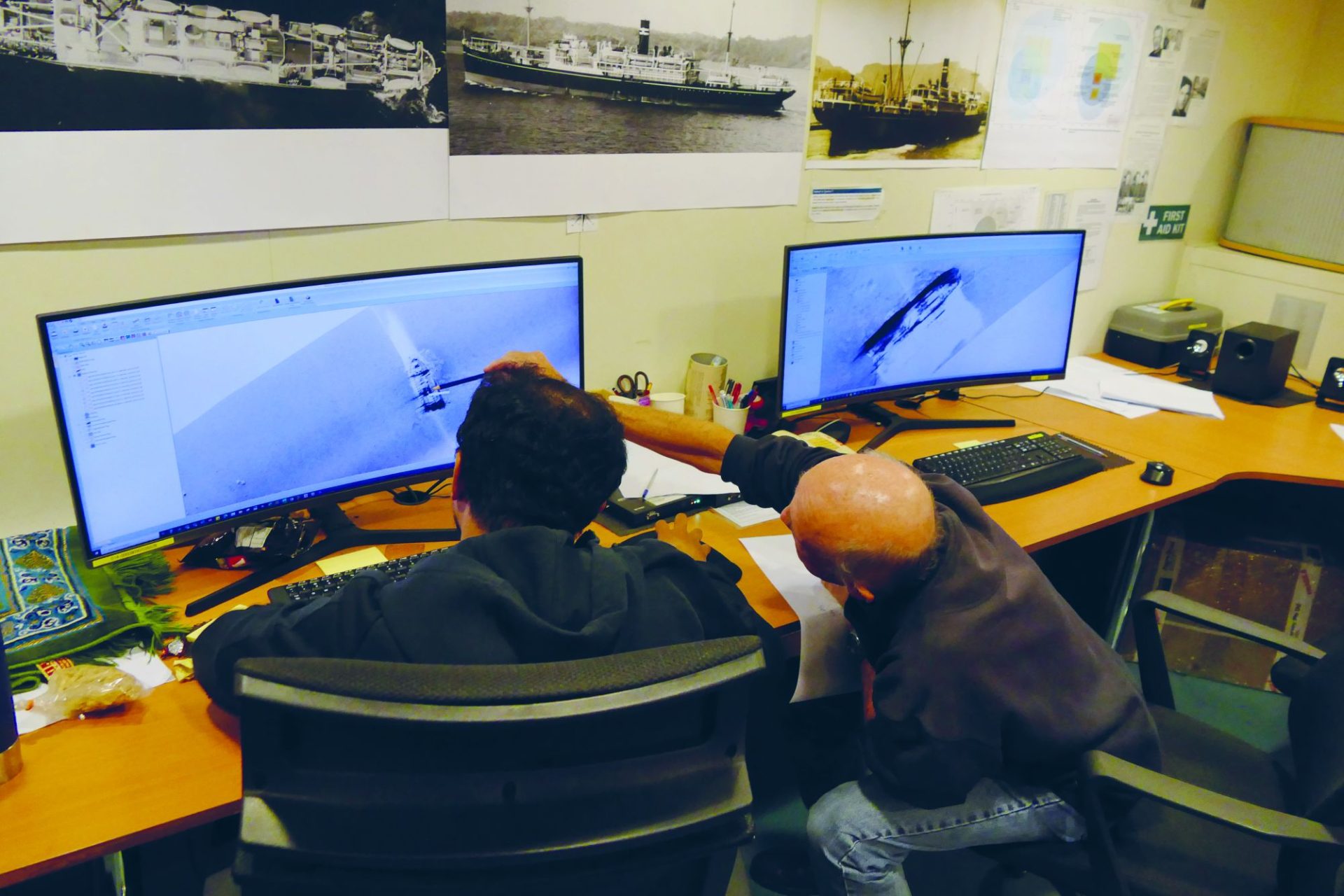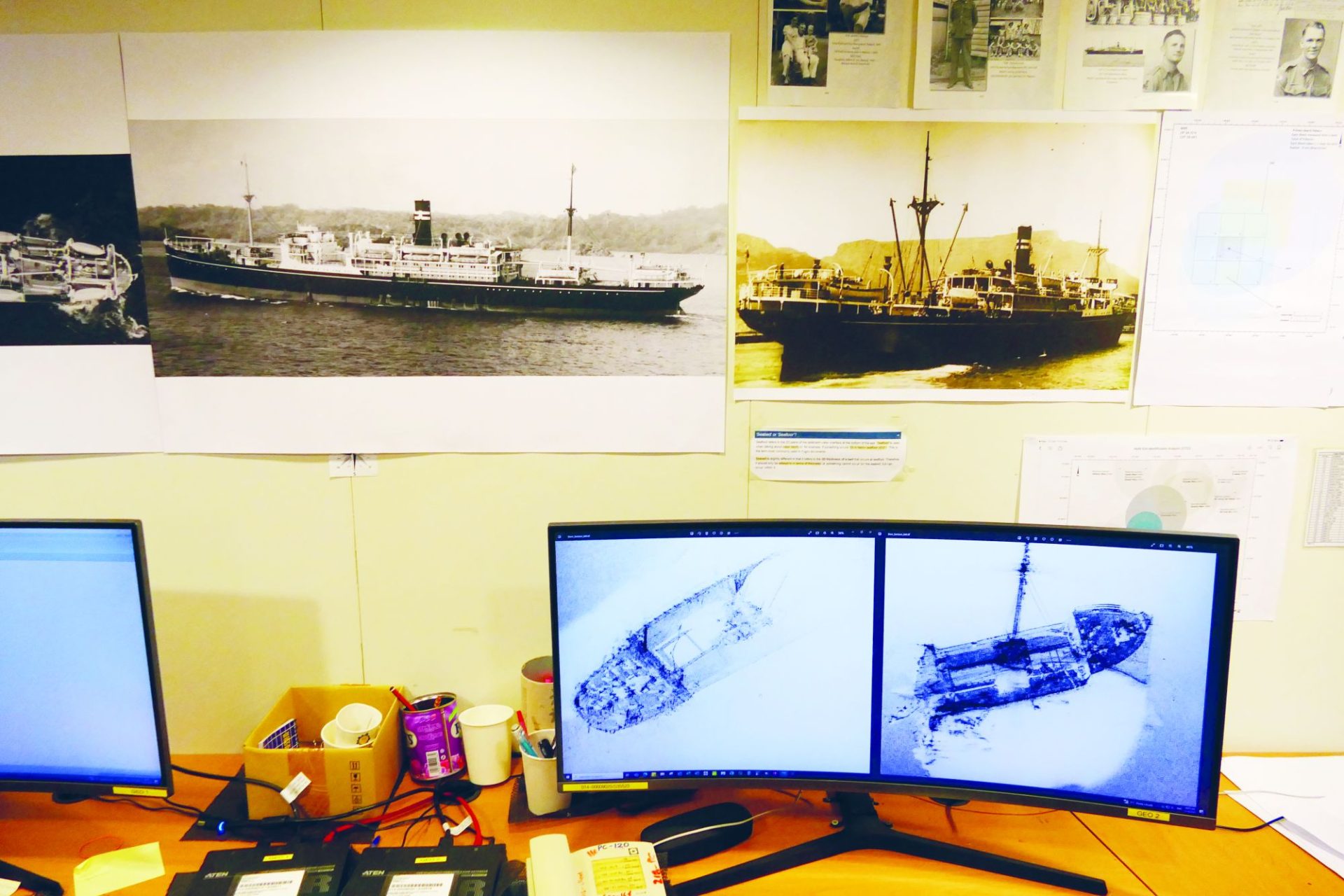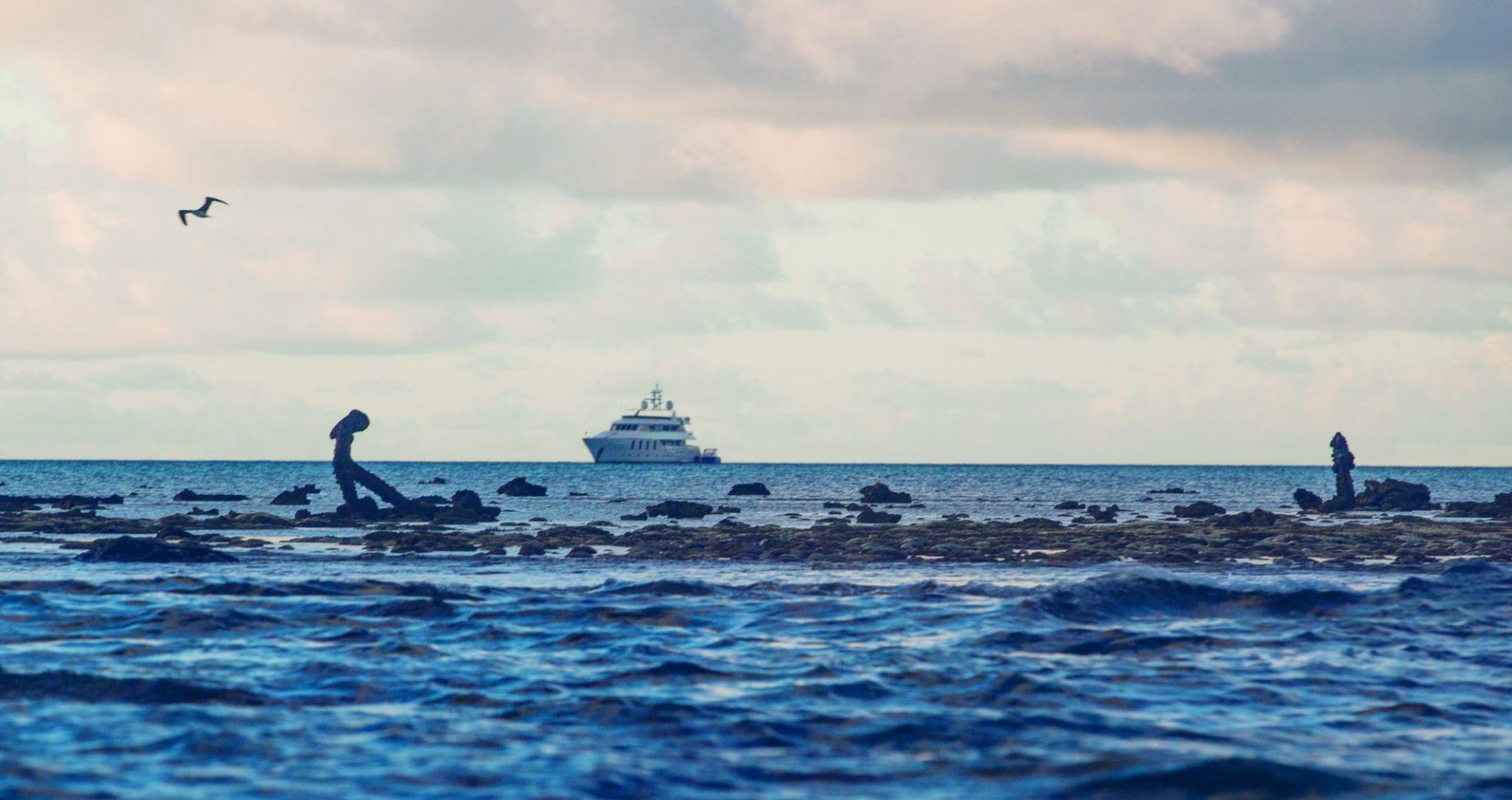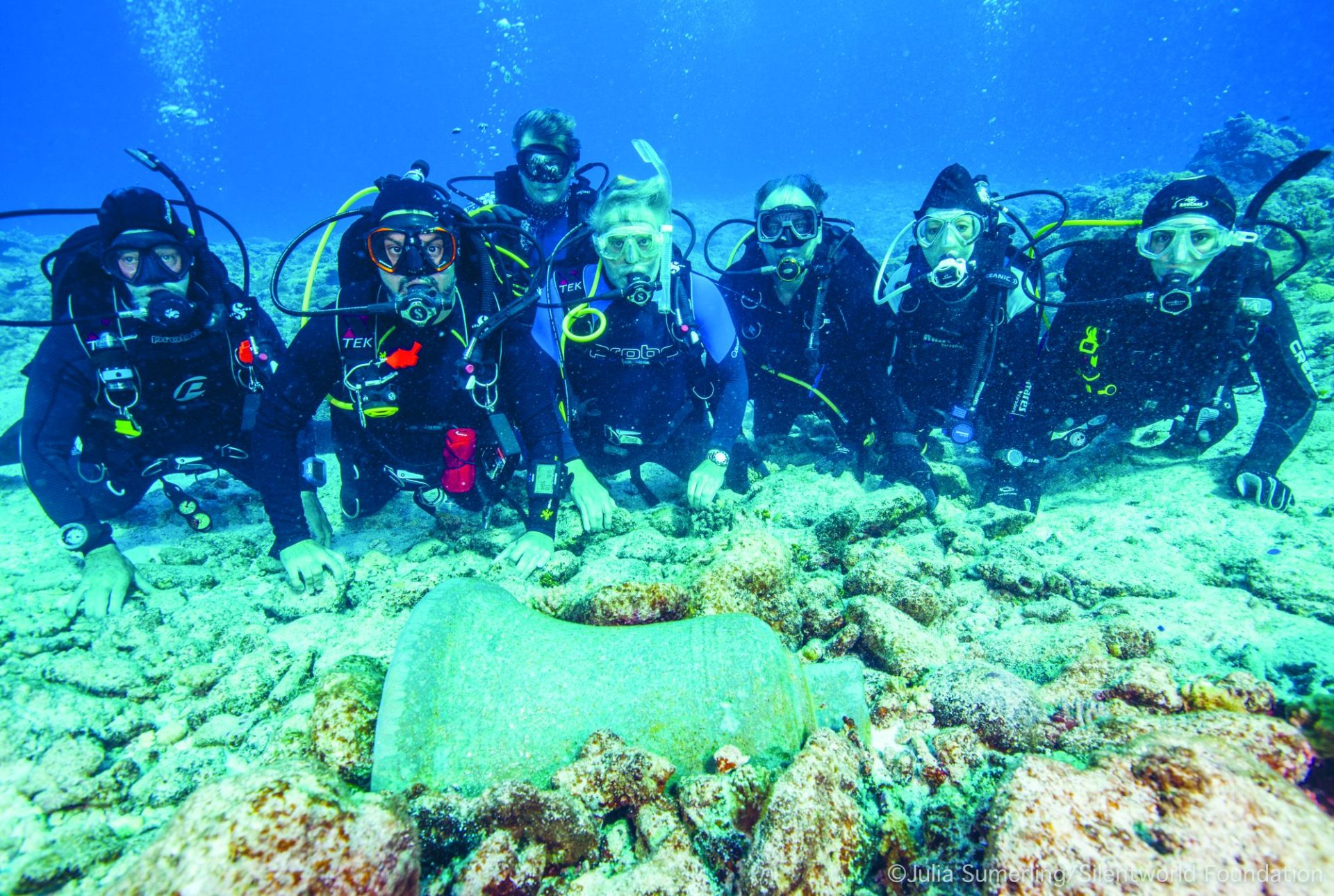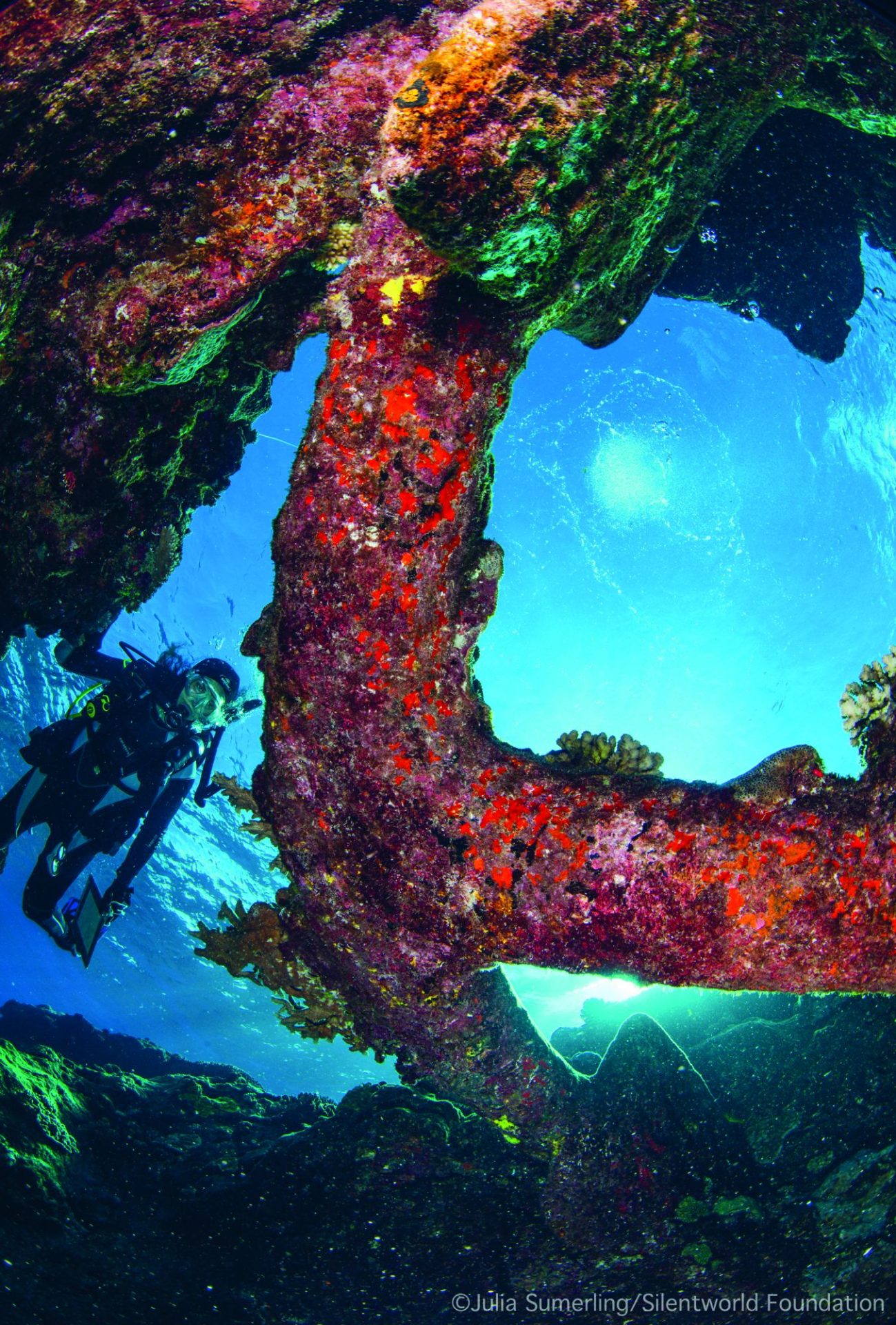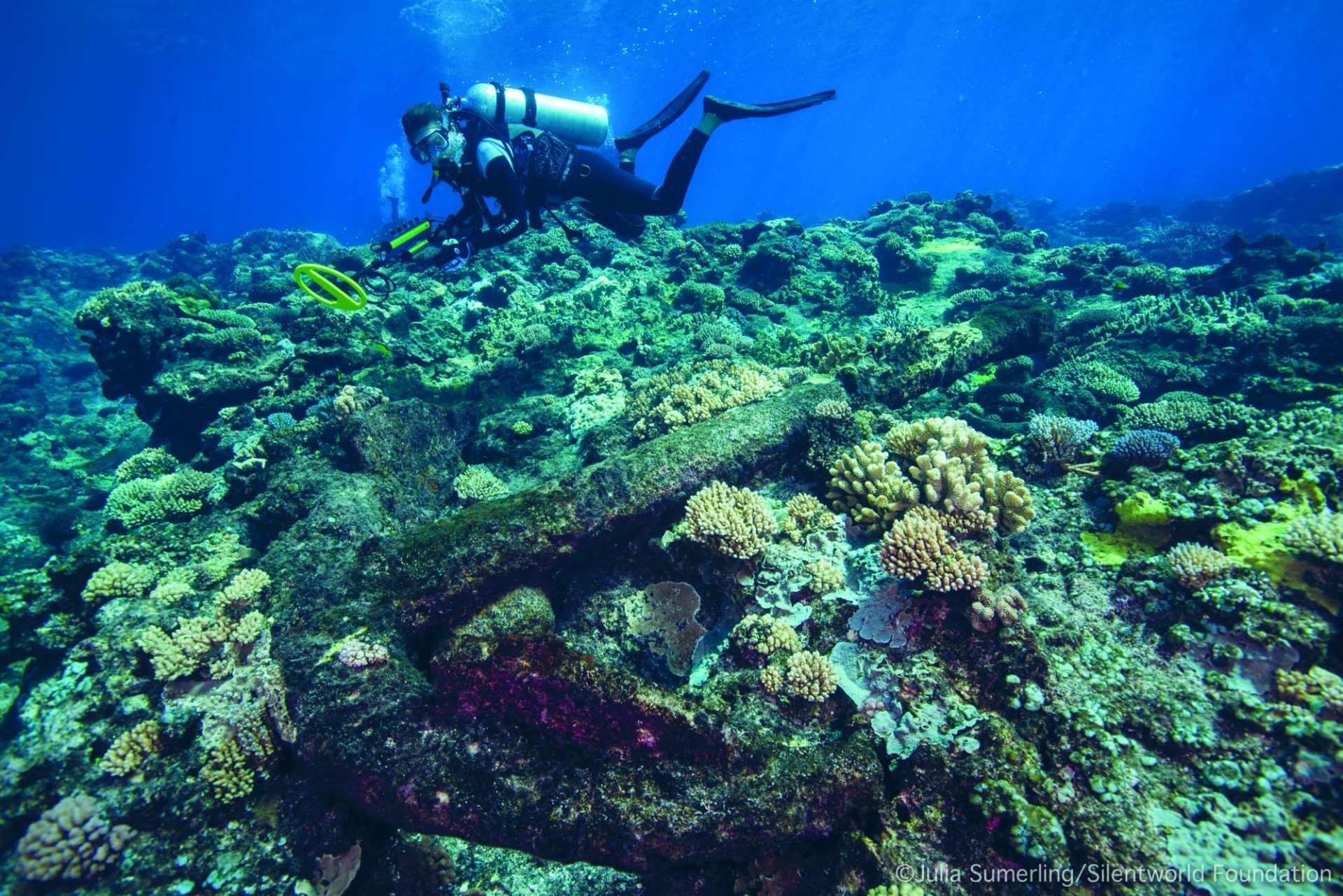Into the light
During World War II, the Montevideo Maru sank while carrying 979 Australians captured in PNG. Finally, an expedition by the Silentworld Foundation has found the wreck, bringing closure to descendants and writing a new chapter in the Pacific’s history.
Photography by Silentworld Foundation/Julia Sumerling
02 November 2023
The intrigue surrounding shipwrecks, the unravelling of the circumstances of their demise, and the history they bring to life is a real-world maritime adventure that can’t help but captivate the imagination.
And yet, the story of the Silentworld Foundation couldn’t be further from the cliches of marauding shipwreck hunters pillaging the sea for long-lost riches and fighting for first rights to important finds. A purely philanthropic venture, the foundation was established in 2007 by the owners of M/Y Silentworld, and aims to support and promote Australasian maritime archaeology, history, culture and heritage.
Recently brought to the public’s attention with the discovery of the Montevideo Maru, which had lain 4,000 metres below the sea since World War II, the foundation is doing much more than scouring the ocean’s depths. With a private collection that holds over 2,000 historical maritime objects from maps and manuscripts to shipwreck material, the scope of the foundation encompasses research projects and expeditions.
From projects such as the restoration of the steam vessel Ena – one of the finest Edwardian steam yachts, built by WM Ford Boatbuilders in 1900 in Berrys Bay, North Sydney – to archaeological work with Sydney Metro on a colonial cutter found while building a new station at Barangaroo, stories from another time and mysteries abound, tying the foundation’s endeavours together and breathing life into history.
As Michael Gooding, Captain of the 39.6-metre Silentworld, who also works at the foundation, explains, “The founders grew up enjoying sea adventures but also had a passion for maritime history, in particular the epic tales of boats and those who sailed them across the Pacific.
“This is where the Silentworld Foundation begins – a passion that has created the momentum for others to explore moments in time and discover the unique history of the South-Pacific region.”
Over the last 10 to 15 years, the foundation has embarked on annual expeditions in search of sunken ships of historical significance from the waters of the Great Barrier Reef to the Pacific Ocean.
With partnerships between the Australian National Maritime Museum, Queensland University, the Museum of Tropical Queensland and Flinders University, and using Silentworld as a base, the foundation plans and finances the expeditions.
“With the help of maritime archaeologists, we piece together the events that lead us to where the ships lie to rest,” says Gooding. “Coming up to some of the locations we visit, with the crew waiting in anticipation, we often wonder what we’ll find beneath the water. With the aid of magnetometer surveys, side-scan sonar, manta board searches and other tools, we hope to find items that can tell us a little of the fate of these ships.”
Gooding says new technology such as drone footage has enabled them to identify black reef phenomenon, whereby iron and ironbased components of a shipwreck discolour, indicating the location of long-lost wrecks.
“Most of what remains includes chains, anchors, pump parts, knees, brackets, sheeting, cannons, ballast and such, which all react to the salt water, creating a black image on an otherwise pastel background. This technology is leading to new discoveries.
“While some of the artefacts we find may appear mundane, finding relics such as a cannon are a little more romantic. One memorable find was a ship’s bell. It was pretty special to go for a dive and realise you’re the first to have seen this bell in over 200 years.”
The Silentworld Foundation’s expeditions and research have so far focused on the final resting place of vessels such as Captain Cook’s Endeavour, deliberately sunk in 1778 by the British in Narragansett Bay, Rhode Island, during the American War of Independence; the Mermaid, which was commanded by Lieutenant Phillip Parker King RN, one of Australia’s greatest maritime surveyors, and wrecked on a coral reef off the Queensland coast in 1829; and L’Astrolabe, part of the French scientific and exploratory expedition led by Laperouse, which was lost in the Solomon Islands without a trace in 1788.
Other shipwrecks include the HMS Pandora, wrecked on the Great Barrier Reef and known for capturing the mutineers on the Bounty in the 1700s. “The story of Bligh and the famous mutiny are typical of the stories we unfold,” says Gooding, recounting how in 2017, Silentworld set off to visit Pitcairn Island, to the east of French Polynesia, to dive the wreck of the infamous HMS Bounty.
“Although little remains in such harsh conditions, this was a rare and memorable opportunity,” he says. “We planned our arrival for dawn to watch the sun rise over Pitcairn and the resting place of the Bounty. It’s a remarkable place, and one of the remotest islands on the earth,” he continues.
“We live in an island paradise, but the ocean in between can be unforgiving. In most instances, there’s no safe anchorage and no shelter – it was a bit of a challenge.”
Although the foundation has predominantly focused on the 17th and 18th centuries, with the success of past expeditions and at the request of different associations, its scope has now expanded to include other periods of history, including the two World Wars.
One significant project was the 2017 search for Australia’s first submarine, HMAS AE1, which sank off Papua New Guinea (PNG) during World War I. The story goes that on 14 September 1914, AE1 was patrolling off Cape Gazelle. After making contact with HMAS Parramatta, AE1 continued the patrol with instructions to return to port in Rabaul by sundown.
AE1 never came back, and no sign of the submarine was ever found. The fate of the vessel and the 35 men on board, comprising Australian, New Zealand and British subjects, remained unsolved for over a century.
“Our work on this expedition has helped to highlight our national history, and solved one of Australia’s greatest maritime mysteries,” says Gooding. “Being able to find the vessel also brought some closure to the families of the 35 men who were lost.”
The foundation is now gaining momentum. Following the successful HMAS AE1 mission, with support from the Department of Defence the foundation teamed up with Fugro, a leading geospatial deep-sea survey specialist company based in the Netherlands, to look for the Montevideo Maru, which was sunk by an American submarine during World War II.
“On 1 July 1942 at 3.43 am, United States Submarine (USS) Sturgeon fired four torpedoes off the Philippines coast at a Japanese vessel it had stalked through the night. At least one of the torpedoes found its target and the vessel sank in less than 11 minutes,” recounts Gooding.
“The crew of USS Sturgeon could not have known that the vessel, later identified as the Montevideo Maru, was transporting Australian soldiers and civilian internees from Rabaul, PNG, captured after its fall to Japanese forces in late January 1942 – the ship bore no identification that it was carrying prisoners of war.”
After several years of research in Australia, the US, PNG and Japan, the foundation approached Unrecovered War Casualties – Army (UWC-A) with a proposal to mount the search for the Montevideo Maru. With significant financial and logistical support from UWC-A, and resources from the Silentworld Foundation and the Rabaul and Montevideo Maru Society, the expedition to locate the final resting place for those on board finally took place in April 2023.
Although the USS Sturgeon recorded the approximate coordinates of the sinking, the Japanese crew recorded it in a different area, so the precise location was unknown. However, after 12 days, using state-of-the-art tech such as an Autonomous Underwater Vehicle (AUV) with in-built sonar, a positive sighting was made in the Philippine Sea, some 129 kilometres off Cape Bojeador.
It took several days for the team of maritime archaeologists, conservators, operations and research specialists and ex-naval officers to verify the wreck. “The ship had broken in two,” says Gooding, “but was otherwise well preserved and retained sufficient features for the team, working with UWC-A, to positively identify it as the Montevideo Maru.”
The disaster remains Australia’s greatest-ever maritime loss of life – 979 Australians lost their lives at sea that day, significantly more than were lost in the sinking of the HMAS Sydney in 1941 (645) and the hospital ship Centaur in 1943 (268).
In addition, 88 prisoners of other nationalities also died, including 33 imprisoned crew members of the Norwegian vessel Herstein, which was sunk in the invasion of Rabaul. Of the 122 Japanese crew, 102 made it to lifeboats and only 10 made it back to Japan.
“The sinking of the Montevideo Maru has great emotional and historical significance given the large loss of life under confused circumstances,” says Gooding. “The ship also has a strong and special association with the Australian Army, and for the descendants of all those lost on board.”
Indeed, Gooding notes, “The families of those lost weren’t aware of their loved ones’ fate until well after the end of the war, causing immeasurable hardship for many families, especially the women who had lost husbands, fathers and other family members and, in some cases, were left destitute, having been evacuated from Rabaul with only the clothes they were wearing.”
And it’s this very personal element of the expeditions – unravelling the mystery of what happened to those lost to the sea, often as part of a historically significant event, decades or even centuries ago – that sets the foundation’s work apart.
It’s providing answers for those who come after them, finally laying unanswered questions and those involved to rest, and sometimes, allowing an official commemoration to occur, but always bringing a sense of peace and resolution. Piecing together the past has never been more personal. Read more about the discovery of the Montevideo Maru in the next edition of Ocean magazine.



